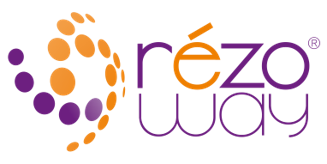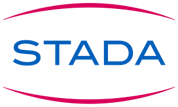Global Brewing Enzymes Market Overview
The Global Brewing Enzymes market was estimated at USD 434.11 million in 2023, and is anticipated to reach USD 752.31 million by 2032, Growing at a CAGR of 6.3% From 2024-2032.
The steady growth of the worldwide brewing enzymes market is fueled by various factors, such as the increasing global demand for beer, especially in emerging economies. Enzymes are essential in the brewing process as they help break down complex substances such as starches into simpler sugars, which yeast then ferments to create alcohol. This boosts the effectiveness of the brewing process, minimizes processing duration, and enhances the quality and uniformity of the end product. Moreover, brewers are being motivated to investigate innovative enzyme solutions in order to produce one-of-a-kind flavors and enhance beer qualities due to the growing demand for craft and specialty beers among consumers.
Furthermore, strict rules regarding sustainability and environmental issues are urging breweries to utilize enzyme-based solutions in order to maximize resource efficiency and reduce waste production. Enzymes provide a more environmentally friendly option compared to conventional brewing techniques because they decrease energy consumption, water usage, and greenhouse gas emissions. Consequently, the worldwide brewing enzymes industry is projected to experience growth in response to breweries' efforts to improve production methods, fulfill diverse beer preferences, and comply with regulations.

Market Dynamics and Factors for the Brewing Enzymes Market
Drivers:
The requirement to improve the production to accomplish the growing beer demand is to accelerate the brewing enzymes market growth. Requirement improved beer quality & better flavor will increase the product demand. The target of beer manufacturers on enhancing the economic feasibility due to the growing count of breweries globally will be triggering the industry growth. Judicious R&D spending on enzyme producers on product development targeting boosting the production efficiency will improve the business revenue over the forecast period.
Growing the number of microbreweries and the necessity to participate with large producers through cost reduction is demanding the brewing enzymes business revenue. Massive product introductions in alcohol-free and low-alcohol categories due to the trend towards a strong lifestyle are hastening the market growth.
Furthermore, accelerating the surge for gluten-free and flavored beer coupled with penetration of worldwide distinguished companies in low-alcohol & alcohol-free segments will propel the demand in the upcoming years. Rising consumer spending on food & beverages especially in emerging countries will aid the beer industry demand. Significant urbanization accompanied by increasing demand for alcoholic beverages through dining restaurants, cafes, bars & pubs will positively affect the market growth.
Restraints:
Brewing enzymes work productively in a lean range near optimum temperature & pH. Additionally, changing raw material prices can restraint the industry revenues. Poor uniformity in regulations may affect the brewing enzymes industry growth.
Opportunities:
Demand for enzymes to raise beer production efficiency. Beer and wine producers constantly look for advanced solutions to accomplish safety standards and improve productivity to meet the changes in consumer demand for beer and wine. Major beer and wine producers are mostly targeted at growing the level of efficiency to raise their level of volumes for the production of beer. Brewers who look for raw material cost savings or use of local raw materials may source under-modified malts or rise the ratio of supplements. Although, the restraining factor is to ensure an adequate complex of enzymatic activities for high-quality wort. Hence, with the intent of growing efficiency and optimize raw material applications, many brewers are now targeted on commercial enzymes to shorten the manufacturing time, rising capacity, and for the usage of raw material substitutes to malt.
The dominance of nuclear double-income families, especially in urban areas in developing nations contributes to the shifting in lifestyles among consumers. Changes in utilization patterns have led to an increase in the demand for alcoholic beverages.
Market Segmentation
Segmentation for the Brewing Enzymes Market:
Based on the Product Type, amylase is projected to account for the maximum share in the market due to the high-ranking functional benefits along with a healthy outlook in several brewery processes including fermentation, mashing, and cereal cooking is positively impacting the amylases business growth. Constant & uniform mashing coupled with enhanced filtration are among the major factors turning the product demand. Higher production of fermentable glucose in beer production particularly in light beer is accelerating the industry development. The necessity to expand the beer production capacity with usages of existing production units is driving the market revenue. The optimal temperature of amylase is higher than other products.
Based on the Source, the microbes segment accounted for the maximum share and dominate the global market, as they are easy to handle, can be produced in massive tanks without light, and have a high growth rate. The ideal microorganism develops instantly and produces a significant amount of the desired enzyme at mild temperatures while consuming cheap nutrients. Microbial sources are also more cost-effective sources than plant sources, which has stimulated the growth of this segment.
Based on the Form, the liquid form is expected to dominate the market over the forecast period. It is preferred in the brewing process as it saves energy, decreases water usage, reduces wastage of beer, and clarifies the filtering process.
Regional Analysis for the Brewing Enzymes Market:
The Asia Pacific region is witnessing a surge in demand for alcoholic beverages, particularly beer and spirits. As economies in the region mature, disposable income is on the rise. This newfound spending power allows individuals to indulge in leisure activities and explore new products, including premium and imported beers and spirits. For instance, China's economic boom has created a massive middle class with a taste for finer things. This has led to a significant increase in the consumption of imported beers and craft spirits, a trend absent just a decade ago.
The Asia Pacific region boasts a large and growing young population. This demographic is particularly susceptible to influences from Western culture, where social gatherings often revolve around alcohol consumption. With a median age of around 30, Vietnam has a youthful population eager to explore new experiences. This has fueled the popularity of bars and pubs, leading to a rise in beer consumption, by both domestic and international brands.
Globalization and increased exposure to Western media have introduced Asian consumers to new drinking habits and social norms. The association of alcohol with relaxation, celebration, and socializing is gaining traction, particularly in urban areas. South Korea, a country known for its vibrant nightlife, exemplifies this trend. Soju, a traditional Korean spirit, remains popular, but there's a growing demand for cocktails, craft beers, and wines influenced by Western drinking culture.
Players Covered in Brewing Enzymes market are :
- Enzyme Innovation (US)
- Eugene Biosciences (India)
- Brenntag SE (Germany)
- DSM (Netherlands)
- Amano Enzyme (Japan)
- Novozymes (Denmark)
- Kerry Group (Ireland)
- Biocatalysts (UK)
- Enzyme Development (US)
- Associated British Foods Plc (UK)
- Dupont De Nemours Inc. (US) and Others Major Players.
Key Industry Development of The Brewing Enzymes Market
- In April 2021, Brenntag North America inc. a part of Brenntag SE has won two awards in the best company outlook and best sales team section. The company has been placed in the top 50 companies in North America among the top brands of the globe. Moreover, the company has acquired the matrix chemical to extend its supplies in the North American region.
- In October 2020, DSM an active company in nutrition and health announced the launch of Maxadjunct ß L, a high-performance adjunct brewing enzyme. With this novel enzyme brewers around the globe will be able to increase the number of adjuncts in their beers. Moreover, it will also help the brewhouse to increase its capacity by 25% and cut the cost of the raw materials.
- In October 2023, Montana State University's research delves into barley protein distribution, crucial for livestock feed and beer clarity. Led by Professor Andreas Fischer, funded by the USDA, the study targets plant enzymes controlling crop value, aiding new grain variety development. This breakthrough intersects with the Brewing Enzymes market, promising advancements in brewing efficiency.
|
Global Brewing Enzymes Market |
|||
|
Base Year: |
2023 |
Forecast Period: |
2024-2032 |
|
Historical Data: |
2017 to 2023 |
Market Size in 2023: |
USD 434.11 Mn. |
|
Forecast Period 2024-32 CAGR: |
6.3% |
Market Size in 2032: |
USD 752.31 Mn. |
|
Segments Covered: |
By Type |
|
|
|
By Source |
|
||
|
By Form |
|
||
|
By Process |
|
||
|
By Application |
|
||
|
By Region |
|
||
|
Key Market Drivers: |
|
||
|
Key Market Restraints: |
|
||
|
Key Opportunities: |
|
||
|
Companies Covered in the report: |
|
||
Chapter 1: Introduction
1.1 Research Objectives
1.2 Research Methodology
1.3 Research Process
1.4 Scope and Coverage
1.4.1 Market Definition
1.4.2 Key Questions Answered
1.5 Market Segmentation
Chapter 2:Executive Summary
Chapter 3:Growth Opportunities By Segment
3.1 By Product Type
3.2 By Process
3.3 By Source
3.4 By Form
3.5 By Application
Chapter 4: Market Landscape
4.1 Porter's Five Forces Analysis
4.1.1 Bargaining Power of Supplier
4.1.2 Threat of New Entrants
4.1.3 Threat of Substitutes
4.1.4 Competitive Rivalry
4.1.5 Bargaining Power Among Buyers
4.2 Industry Value Chain Analysis
4.3 Market Dynamics
3.5.1 Drivers
3.5.2 Restraints
3.5.3 Opportunities
3.5.4 Challenges
4.4 Pestle Analysis
4.5 Technological Roadmap
4.6 Regulatory Landscape
4.7 SWOT Analysis
4.8 Price Trend Analysis
4.9 Patent Analysis
4.10 Analysis of the Impact of Covid-19
4.10.1 Impact on the Overall Market
4.10.2 Impact on the Supply Chain
4.10.3 Impact on the Key Manufacturers
4.10.4 Impact on the Pricing
Chapter 4: Brewing Enzymes Market by Product Type
4.1 Brewing Enzymes Market Overview Snapshot and Growth Engine
4.2 Brewing Enzymes Market Overview
4.3 Amylase {Α-Amylase & Β-Amylase}
4.3.1 Introduction and Market Overview
4.3.2 Historic and Forecasted Market Size (2017-2032F)
4.3.3 Key Market Trends, Growth Factors and Opportunities
4.3.4 Amylase {Α-Amylase & Β-Amylase}: Grographic Segmentation
4.4 Beta-Glucanase
4.4.1 Introduction and Market Overview
4.4.2 Historic and Forecasted Market Size (2017-2032F)
4.4.3 Key Market Trends, Growth Factors and Opportunities
4.4.4 Beta-Glucanase: Grographic Segmentation
4.5 Protease Amyloglucosidase
4.5.1 Introduction and Market Overview
4.5.2 Historic and Forecasted Market Size (2017-2032F)
4.5.3 Key Market Trends, Growth Factors and Opportunities
4.5.4 Protease Amyloglucosidase: Grographic Segmentation
4.6 Xylanase
4.6.1 Introduction and Market Overview
4.6.2 Historic and Forecasted Market Size (2017-2032F)
4.6.3 Key Market Trends, Growth Factors and Opportunities
4.6.4 Xylanase: Grographic Segmentation
4.7 Others
4.7.1 Introduction and Market Overview
4.7.2 Historic and Forecasted Market Size (2017-2032F)
4.7.3 Key Market Trends, Growth Factors and Opportunities
4.7.4 Others: Grographic Segmentation
Chapter 5: Brewing Enzymes Market by Process
5.1 Brewing Enzymes Market Overview Snapshot and Growth Engine
5.2 Brewing Enzymes Market Overview
5.3 Malting
5.3.1 Introduction and Market Overview
5.3.2 Historic and Forecasted Market Size (2017-2032F)
5.3.3 Key Market Trends, Growth Factors and Opportunities
5.3.4 Malting: Grographic Segmentation
5.4 Mashing And Fermentation
5.4.1 Introduction and Market Overview
5.4.2 Historic and Forecasted Market Size (2017-2032F)
5.4.3 Key Market Trends, Growth Factors and Opportunities
5.4.4 Mashing And Fermentation: Grographic Segmentation
5.5 Wort Separation And Filtration
5.5.1 Introduction and Market Overview
5.5.2 Historic and Forecasted Market Size (2017-2032F)
5.5.3 Key Market Trends, Growth Factors and Opportunities
5.5.4 Wort Separation And Filtration: Grographic Segmentation
5.6 Maturation
5.6.1 Introduction and Market Overview
5.6.2 Historic and Forecasted Market Size (2017-2032F)
5.6.3 Key Market Trends, Growth Factors and Opportunities
5.6.4 Maturation: Grographic Segmentation
Chapter 6: Brewing Enzymes Market by Source
6.1 Brewing Enzymes Market Overview Snapshot and Growth Engine
6.2 Brewing Enzymes Market Overview
6.3 Plants
6.3.1 Introduction and Market Overview
6.3.2 Historic and Forecasted Market Size (2017-2032F)
6.3.3 Key Market Trends, Growth Factors and Opportunities
6.3.4 Plants: Grographic Segmentation
6.4 Microbes
6.4.1 Introduction and Market Overview
6.4.2 Historic and Forecasted Market Size (2017-2032F)
6.4.3 Key Market Trends, Growth Factors and Opportunities
6.4.4 Microbes: Grographic Segmentation
Chapter 7: Brewing Enzymes Market by Form
7.1 Brewing Enzymes Market Overview Snapshot and Growth Engine
7.2 Brewing Enzymes Market Overview
7.3 Liquid
7.3.1 Introduction and Market Overview
7.3.2 Historic and Forecasted Market Size (2017-2032F)
7.3.3 Key Market Trends, Growth Factors and Opportunities
7.3.4 Liquid: Grographic Segmentation
7.4 Powder
7.4.1 Introduction and Market Overview
7.4.2 Historic and Forecasted Market Size (2017-2032F)
7.4.3 Key Market Trends, Growth Factors and Opportunities
7.4.4 Powder: Grographic Segmentation
Chapter 8: Brewing Enzymes Market by Application
8.1 Brewing Enzymes Market Overview Snapshot and Growth Engine
8.2 Brewing Enzymes Market Overview
8.3 Wine Industry
8.3.1 Introduction and Market Overview
8.3.2 Historic and Forecasted Market Size (2017-2032F)
8.3.3 Key Market Trends, Growth Factors and Opportunities
8.3.4 Wine Industry: Grographic Segmentation
8.4 Beer Industry
8.4.1 Introduction and Market Overview
8.4.2 Historic and Forecasted Market Size (2017-2032F)
8.4.3 Key Market Trends, Growth Factors and Opportunities
8.4.4 Beer Industry: Grographic Segmentation
8.5 And Fruit Juice Industry
8.5.1 Introduction and Market Overview
8.5.2 Historic and Forecasted Market Size (2017-2032F)
8.5.3 Key Market Trends, Growth Factors and Opportunities
8.5.4 And Fruit Juice Industry: Grographic Segmentation
Chapter 9: Company Profiles and Competitive Analysis
9.1 Competitive Landscape
9.1.1 Competitive Positioning
9.1.2 Brewing Enzymes Sales and Market Share By Players
9.1.3 Industry BCG Matrix
9.1.4 Ansoff Matrix
9.1.5 Brewing Enzymes Industry Concentration Ratio (CR5 and HHI)
9.1.6 Top 5 Brewing Enzymes Players Market Share
9.1.7 Mergers and Acquisitions
9.1.8 Business Strategies By Top Players
9.2 ENZYME INNOVATION (US)
9.2.1 Company Overview
9.2.2 Key Executives
9.2.3 Company Snapshot
9.2.4 Operating Business Segments
9.2.5 Product Portfolio
9.2.6 Business Performance
9.2.7 Key Strategic Moves and Recent Developments
9.2.8 SWOT Analysis
9.3 EUGENE BIOSCIENCES (INDIA)
9.4 BRENNTAG SE (GERMANY)
9.5 DSM (NETHERLANDS)
9.6 AMANO ENZYME (JAPAN)
9.7 NOVOZYMES (DENMARK)
9.8 KERRY GROUP (IRELAND)
9.9 BIOCATALYSTS (UK)
9.10 ENZYME DEVELOPMENT (US)
9.11 ASSOCIATED BRITISH FOODS PLC (UK)
9.12 DUPONT DE NEMOURS INC. (US)
9.13 OTHERS
Chapter 10: Global Brewing Enzymes Market Analysis, Insights and Forecast, 2017-2032
10.1 Market Overview
10.2 Historic and Forecasted Market Size By Product Type
10.2.1 Amylase {Α-Amylase & Β-Amylase}
10.2.2 Beta-Glucanase
10.2.3 Protease Amyloglucosidase
10.2.4 Xylanase
10.2.5 Others
10.3 Historic and Forecasted Market Size By Process
10.3.1 Malting
10.3.2 Mashing And Fermentation
10.3.3 Wort Separation And Filtration
10.3.4 Maturation
10.4 Historic and Forecasted Market Size By Source
10.4.1 Plants
10.4.2 Microbes
10.5 Historic and Forecasted Market Size By Form
10.5.1 Liquid
10.5.2 Powder
10.6 Historic and Forecasted Market Size By Application
10.6.1 Wine Industry
10.6.2 Beer Industry
10.6.3 And Fruit Juice Industry
Chapter 11: North America Brewing Enzymes Market Analysis, Insights and Forecast, 2017-2032
11.1 Key Market Trends, Growth Factors and Opportunities
11.2 Impact of Covid-19
11.3 Key Players
11.4 Key Market Trends, Growth Factors and Opportunities
11.4 Historic and Forecasted Market Size By Product Type
11.4.1 Amylase {Α-Amylase & Β-Amylase}
11.4.2 Beta-Glucanase
11.4.3 Protease Amyloglucosidase
11.4.4 Xylanase
11.4.5 Others
11.5 Historic and Forecasted Market Size By Process
11.5.1 Malting
11.5.2 Mashing And Fermentation
11.5.3 Wort Separation And Filtration
11.5.4 Maturation
11.6 Historic and Forecasted Market Size By Source
11.6.1 Plants
11.6.2 Microbes
11.7 Historic and Forecasted Market Size By Form
11.7.1 Liquid
11.7.2 Powder
11.8 Historic and Forecasted Market Size By Application
11.8.1 Wine Industry
11.8.2 Beer Industry
11.8.3 And Fruit Juice Industry
11.9 Historic and Forecast Market Size by Country
11.9.1 U.S.
11.9.2 Canada
11.9.3 Mexico
Chapter 12: Europe Brewing Enzymes Market Analysis, Insights and Forecast, 2017-2032
12.1 Key Market Trends, Growth Factors and Opportunities
12.2 Impact of Covid-19
12.3 Key Players
12.4 Key Market Trends, Growth Factors and Opportunities
12.4 Historic and Forecasted Market Size By Product Type
12.4.1 Amylase {Α-Amylase & Β-Amylase}
12.4.2 Beta-Glucanase
12.4.3 Protease Amyloglucosidase
12.4.4 Xylanase
12.4.5 Others
12.5 Historic and Forecasted Market Size By Process
12.5.1 Malting
12.5.2 Mashing And Fermentation
12.5.3 Wort Separation And Filtration
12.5.4 Maturation
12.6 Historic and Forecasted Market Size By Source
12.6.1 Plants
12.6.2 Microbes
12.7 Historic and Forecasted Market Size By Form
12.7.1 Liquid
12.7.2 Powder
12.8 Historic and Forecasted Market Size By Application
12.8.1 Wine Industry
12.8.2 Beer Industry
12.8.3 And Fruit Juice Industry
12.9 Historic and Forecast Market Size by Country
12.9.1 Germany
12.9.2 U.K.
12.9.3 France
12.9.4 Italy
12.9.5 Russia
12.9.6 Spain
Chapter 13: Asia-Pacific Brewing Enzymes Market Analysis, Insights and Forecast, 2017-2032
13.1 Key Market Trends, Growth Factors and Opportunities
13.2 Impact of Covid-19
13.3 Key Players
13.4 Key Market Trends, Growth Factors and Opportunities
13.4 Historic and Forecasted Market Size By Product Type
13.4.1 Amylase {Α-Amylase & Β-Amylase}
13.4.2 Beta-Glucanase
13.4.3 Protease Amyloglucosidase
13.4.4 Xylanase
13.4.5 Others
13.5 Historic and Forecasted Market Size By Process
13.5.1 Malting
13.5.2 Mashing And Fermentation
13.5.3 Wort Separation And Filtration
13.5.4 Maturation
13.6 Historic and Forecasted Market Size By Source
13.6.1 Plants
13.6.2 Microbes
13.7 Historic and Forecasted Market Size By Form
13.7.1 Liquid
13.7.2 Powder
13.8 Historic and Forecasted Market Size By Application
13.8.1 Wine Industry
13.8.2 Beer Industry
13.8.3 And Fruit Juice Industry
13.9 Historic and Forecast Market Size by Country
13.9.1 China
13.9.2 India
13.9.3 Japan
13.9.4 Southeast Asia
Chapter 14: South America Brewing Enzymes Market Analysis, Insights and Forecast, 2017-2032
14.1 Key Market Trends, Growth Factors and Opportunities
14.2 Impact of Covid-19
14.3 Key Players
14.4 Key Market Trends, Growth Factors and Opportunities
14.4 Historic and Forecasted Market Size By Product Type
14.4.1 Amylase {Α-Amylase & Β-Amylase}
14.4.2 Beta-Glucanase
14.4.3 Protease Amyloglucosidase
14.4.4 Xylanase
14.4.5 Others
14.5 Historic and Forecasted Market Size By Process
14.5.1 Malting
14.5.2 Mashing And Fermentation
14.5.3 Wort Separation And Filtration
14.5.4 Maturation
14.6 Historic and Forecasted Market Size By Source
14.6.1 Plants
14.6.2 Microbes
14.7 Historic and Forecasted Market Size By Form
14.7.1 Liquid
14.7.2 Powder
14.8 Historic and Forecasted Market Size By Application
14.8.1 Wine Industry
14.8.2 Beer Industry
14.8.3 And Fruit Juice Industry
14.9 Historic and Forecast Market Size by Country
14.9.1 Brazil
14.9.2 Argentina
Chapter 15: Middle East & Africa Brewing Enzymes Market Analysis, Insights and Forecast, 2017-2032
15.1 Key Market Trends, Growth Factors and Opportunities
15.2 Impact of Covid-19
15.3 Key Players
15.4 Key Market Trends, Growth Factors and Opportunities
15.4 Historic and Forecasted Market Size By Product Type
15.4.1 Amylase {Α-Amylase & Β-Amylase}
15.4.2 Beta-Glucanase
15.4.3 Protease Amyloglucosidase
15.4.4 Xylanase
15.4.5 Others
15.5 Historic and Forecasted Market Size By Process
15.5.1 Malting
15.5.2 Mashing And Fermentation
15.5.3 Wort Separation And Filtration
15.5.4 Maturation
15.6 Historic and Forecasted Market Size By Source
15.6.1 Plants
15.6.2 Microbes
15.7 Historic and Forecasted Market Size By Form
15.7.1 Liquid
15.7.2 Powder
15.8 Historic and Forecasted Market Size By Application
15.8.1 Wine Industry
15.8.2 Beer Industry
15.8.3 And Fruit Juice Industry
15.9 Historic and Forecast Market Size by Country
15.9.1 Saudi Arabia
15.9.2 South Africa
Chapter 16 Investment Analysis
Chapter 17 Analyst Viewpoint and Conclusion
|
Global Brewing Enzymes Market |
|||
|
Base Year: |
2023 |
Forecast Period: |
2024-2032 |
|
Historical Data: |
2017 to 2023 |
Market Size in 2023: |
USD 434.11 Mn. |
|
Forecast Period 2024-32 CAGR: |
6.3% |
Market Size in 2032: |
USD 752.31 Mn. |
|
Segments Covered: |
By Type |
|
|
|
By Source |
|
||
|
By Form |
|
||
|
By Process |
|
||
|
By Application |
|
||
|
By Region |
|
||
|
Key Market Drivers: |
|
||
|
Key Market Restraints: |
|
||
|
Key Opportunities: |
|
||
|
Companies Covered in the report: |
|
||
Frequently Asked Questions :
The forecast period in the Brewing Enzymes Market research report is 2024-2032.
Dupont De Nemours Inc., Novozymes, DSM, Eugene Biosciences, Kerry Group, Brenntag SE, and Other Major Players.
The Brewing Enzymes Market is segmented into Type, Source, Form, Application, and Region. By Type, the market is categorized into Amylase, Β-Glucanase, Proteases Amyloglucosidase, Xylanase, and Others. By Source the market is categorized into Plants, and Microbes. By Form, the market is categorized into Powder, and Liquid. By Process, the market is categorized into Malting, Mashing & Fermentation, Wort Separation & Filtration, and Maturation. By Application, the market is categorized into Swine, Poultry, Aquaculture, Sheep's, Goats, and Others. By region, it is analyzed across North America (U.S.; Canada; Mexico), Europe (Germany; U.K.; France; Italy; Russia; Spain, etc.), Asia-Pacific (China; India; Japan; Southeast Asia, etc.), South America (Brazil; Argentina, etc.), Middle East & Africa (Saudi Arabia; South Africa, etc.).
Enzymes are complex organic substances that act as a catalyst to fasten a chemical reaction while it remains unchanged in the end. The conventional brewing process requires an incredible amount of energy while the use of the brewing enzymes reduces the energy required in the brewing process thus it is an economically preferable process.
The Global Brewing Enzymes market was estimated at USD 434.11 million in 2023, and is anticipated to reach USD 752.31 million by 2032, Growing at a CAGR of 6.3% From 2024-2032.











